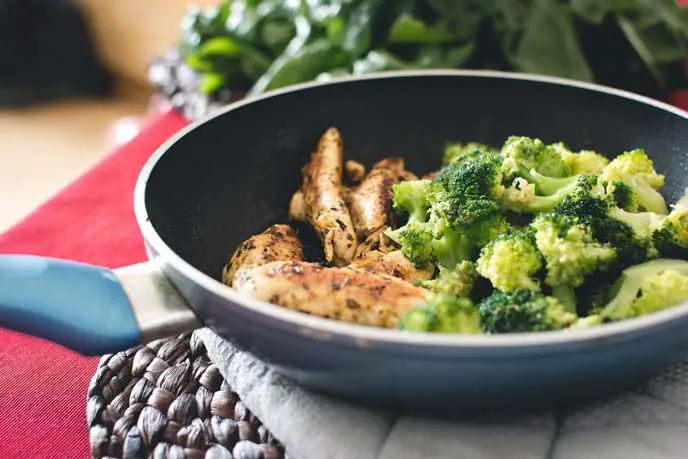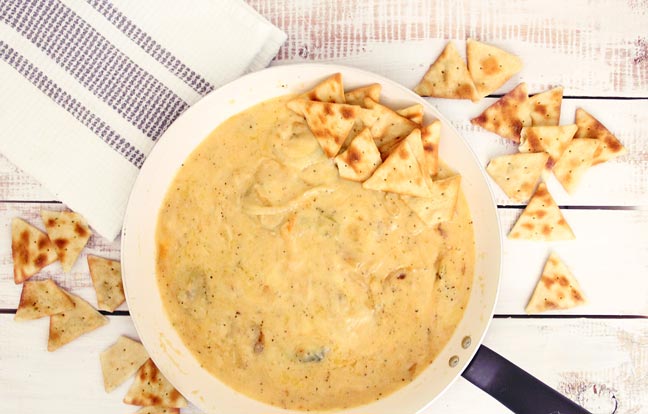There are many choices on the market when it comes to cookware. Pots and pans can be made out of different materials, conduct heat differently, and ultimately affect the food that is made in them.
Out of the many materials used to make cookware, aluminum and ceramic are two of the most popular choices. This article will help you understand the advantages that each type of cookware brings to the home cook, as well as outlining the minor drawbacks of each. Armed with this information, you will feel confident about which type of cookware to purchase for your kitchen.
Why Is Aluminum Used in Cookware?
Aluminum is used by many cookware manufacturers to produce their products, and for good reason. First being, there is enough of it to go around. Aluminum is the most abundant metal in the Earth’s crust and the third most abundant element. Scientists have been able to extract aluminum from nature since the late 1800’s, and it has been used in a wide variety of products ever since.
Thirdly, aluminum is a strong material, but also lightweight. It makes sturdy and durable pots and pans, but light enough that the average home cook can casually lift and use with ease.
Is the Aluminum Used in Cookware Treated?
Yes, it is. Because aluminum is a naturally occurring element, it is affected by exposure to oxygen. When exposed to air, a thin layer of aluminum oxide forms of the surface, creating a barrier to prevent the rest of the metal from being exposed. To make this layer stronger and thicker, a process called “anodization” is applied to the metal to control the natural oxidation process.
What is “Hard Anodized Aluminum” ?
While all anodized aluminum has been treated to halt oxidation, hard anodized aluminum takes it a step further.
The process of anodizing the metal uses higher voltage and lower temperatures, creating an even harder and more durable coating on the metal. It becomes even more resistant to abrasion and corrosion.
Though other metals and cookware can be treated with an outer layer that contributes to durability or non-stick qualities, anodized aluminum doesn’t have a layer that can peel off over time. The process of anodizing fuses the strong outer layer to the metal itself.
This extra treatment to the metal makes hard anodized aluminum an especially great material to use for cookware.
Is Hard Anodized Aluminum Non-Stick?
Naturally, hard anodized aluminum has non-stick qualities, but isn’t completely non-stick. Eggs might not slide gently off the pans, but when used in the correct fashion, hard anodized aluminum pans are very low-stick. There are a few hard anodized aluminum products on the market that are treated with an extra coating to make the surface a true non-stick.
Now, we will look deeper into ceramic cookware.
What is Ceramic Cookware?
When many people hear the words “ceramic,” they picture handmade clay pottery that is brittle and breaks easily. While clay pottery and ceramic cookware are both fired in a kiln, that is about all that they have in common.
There are different types of ceramic cookware, pure ceramic and ceramic-coated.
What is Pure Ceramic Cookware?
Cookware that is made with pure ceramic is typically made from clay, minerals and quartz sand. The materials are melted and shaped, then fired to heat levels up to 1915ºF! This process is called vitrification, where something is heated enough that it is converted into glass or a glass-like substance. The cookware is then often coated in an additional outer glaze that adds color and waterproof qualities.
Cookware made with pure ceramic tends to be heavier to handle, can withstand higher temperatures and can last years.
What is Ceramic-Coated Cookware?
When cookware is labeled “ceramic-coated” is made from metal, typically aluminum, and then coated or dipped into a bath of ceramic material. The coating gives the cookware non-stick qualities, exterior colors and reinforcing agents.
While this coating is very durable and strong, it is not permanent. After time and extended use, it is possible for the coating to become scratched off.
Ceramic-coated cookware is typically lighter than pure ceramic, since the inner core is made from aluminum. While it is lighter and comes with a lower price point than pure ceramic cookware, it is not as long lasting or durable as cookware made with pure ceramic.
Are there Safety Concerns with These Types of Cookware?
Many people have safety concerns with the different types of cookware.
Safety Concerns with Traditional Non-Stick Cookware
When true non-stick coated pans hit the market in the 1960’s, Teflon (PTFE) and the chemical PFOA were used to coat the surface. While the chemical compounds used are safe for humans, if the coating is exposed to temperatures above 500ºF, the molecules in PTFE and PFOA can start to breakdown, potentially releasing harmful gases to the human body. But not to worry. Most non-stick skillets today are made without these chemicals.
Are there Safety Concerns with Cooking with Hard Anodized Aluminum?
Aluminum cookware has also gained a bit of a bad reputation over the years. If food is ever in direct contact with the metal, there is a small chance that some aluminum could leak into the food. This is more likely if the food is highly acidic, for example, tomato sauce.
According to a 2012 independent lab test conducted by Cook’s Illustrated, tomato sauce that was cooked in an aluminum pan for two hours and stored overnight in the same pan only contained 0.0024 mg of aluminum per cup. This amount seems extremely miniscule considering most people consume between 1-10 mg of aluminum per day from natural sources. There are even over-the-counter antacids that have more than 100 mg of aluminum. According to the FDA, that is still considered a safe level of consumed aluminum.
When it comes to cookware made with aluminum, most people are aren’t cooking with pure aluminum pots and pans. Almost every aluminum product in the cookware market has been anodized and possibly treated with a non-stick coating in addition. This makes aluminum absorption into food nearly impossible.
To answer the question, “are there safety concerns with cooking with hard anodized aluminum?”
No, there aren’t safety concerns with cooking with anodized aluminum. While it is possible for some aluminum to leak into an acidic food, but only if the pan isn’t made from anodized aluminum. But even then, it is not enough aluminum to cause any health risks.
Benefits and Drawbacks
Comparison Table
Cookware | Materials | Cooking Heat | Tools/ Utensils | Price | Non-Stick | Top Rated Amazon Products |
|---|---|---|---|---|---|---|
Hard Anodized Aluminum | Aluminum | Medium to Medium High | All tools | $$$ | Low-stick | |
Pure Ceramic | Ceramic | High | All tools | $$$$ | Low-stick | |
Ceramic-Coated | Aluminum with ceramic coating | Low to Medium cooking heat | No metal utensils | $$ | Can be non-stick |
Benefits of Hard-Anodized Aluminum Cookware
A major benefit of using hard-anodized aluminum cookware is that any cooking tool or utensil can be used. Since the outer layer is fused with the metal, there isn’t a surface that can be scratched off.
This type of cookware is moderately priced, light-weight, non-reactive and conducts heat very fast and evenly.
Drawbacks of Hard Anodized Aluminum Cookware
Hard anodized aluminum pans do heat up quickly, they should only be used for medium to medium-high temperatures.
While the pan’s surface have many non-stick qualities, it is not truly a non-stick pan. Certain foods could stick to the cooking surface, making the pan tricky to clean. If food does stick, use regular dish soap and a gentle brush to remove stuck on food.
This type of cookware shouldn’t be put in the dishwasher, but washed by hand instead.
Benefits of Pure Ceramic Cookware
Thanks to the high heat used to make pure ceramic cookware, these type of pots and pans are safe to use with high heat. Most brands are oven safe up to 850F°.
While using metal utensils on pure ceramic cookware can still scratch or discolor the cooking surface, they are still generally safe to use with this type of cookware.
Pure ceramic cookware comes in many different and exciting colors and shapes, adding a pop of color into your kitchen.
Drawbacks of Pure Ceramic Cookware
Since the core of this type of cookware is ceramic, and not a metal, this makes the cookware heavier than other types of pots and pans. It can be especially heavy if you start a recipe on the stove the transfer the entire pot and its contents into the oven, like a pot roast.
Because of its non-metal core, pure ceramic isn’t typically compatible with induction cooktops.
While pure ceramic cookware is very durable when it comes to cooking, they are very hard and brittle and are susceptible to chipping or cracking if dropped or mishandled.
Pure ceramic cookware should be hand-washed to keep the cookware in the best shape.
Benefits of Ceramic-Coated Cookware
This type of cookware is generally treated with an extra coating on the cooking surface, making the pan non-stick.
These pans are lighter because they have a metal core, and most are compatible with cooking on induction cooktops.
Drawbacks of Ceramic-Coated Cookware
This type of cookware should be used with wooden, plastic, silicone or nylon utensils, to protect the non-stick coating.
They should also be used for low to medium-heat cooking.
Many brands will say that the cookware is dishwasher safe, but it is recommended to wash by hand to extend the life of the pan.
Like with most non-stick pans, many customers experience the non-stick qualities deteriorating over time.
Considerations to Make Before Purchasing
Budget - These types of cookware vary in price. Some pure ceramic pots and pans can cost a few hundred dollars. But with a higher price comes durability. Many of the higher priced cookware can last generations.
Cooking Surface and Tools - If you only cook with induction and only use metal utensils, this will play a factor in the type of cookware you purchase.
How many pieces you’ll need - Many times, hard anodized aluminum and ceramic coated pots and pans come in a set, anywhere from 5-15 pieces. Know what size of cookware you are most likely to use, and how much space you have to store all the pieces.
Further Reading: Why Do You Need Different Sized Saucepans?
Final Thoughts
There can be room for both anodized aluminum and ceramic cookware in your kitchen. While they have some similarities, they can accomplish different things in your kitchen.
There also shouldn’t be safety concerns with chemicals or toxins when purchasing hard anodized aluminum or ceramic cookware. But it is important to purchase a brand you trust and has a good reputation for safe products.
Want more cookware reviews? Click here to view the Best Cookware to Use on a Ceramic Glass Cooktop.





1 thought on “What You Should Know About Hard Anodized Aluminum Vs Ceramic Cookware”